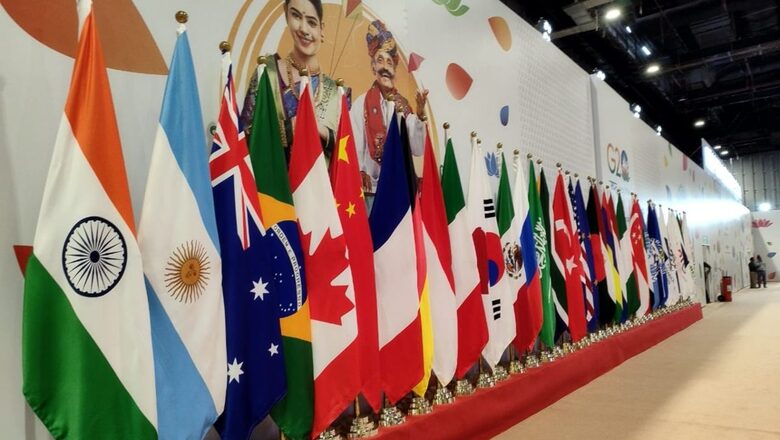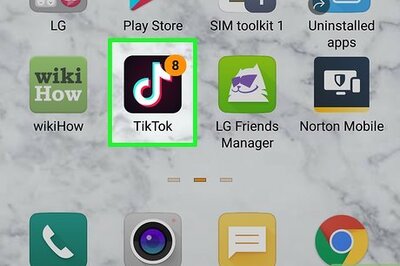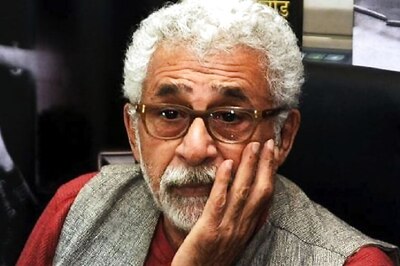
views
The absence of Chinese President Xi Jinping and Russian President Vladimir Putin at the G20 Heads of Government summit in New Delhi brings clarity to the future shape of geopolitical power.
Three poles are visible, though in overlapping parabolic axes. The first axis is the United States-led coalition of democracies. The second is the China-Russia axis of autocracies. The third pole is the amorphous Global South led by India and other neutral powers.
The catch in this tripolar world is that several countries have divided loyalties. The newly expanded BRICS, for example, has traditional US allies like Saudi Arabia and the United Arab Emirates (UAE) in a forum increasingly dominated by China. Beijing has begun to wean both Saudi Arabia and the UAE away from the US orbit.
With most members of the nine-nation Shanghai Cooperation Organisation (SCO) leaning towards China and Russia, Beijing is building a platform through BRICS and SCO that can challenge the G7, NATO and other Western alliances.
India finds itself in a piquant situation. It has been railroaded into accepting BRICS’ expansion, diluting its relative primacy in the group. In the SCO, the entry of Pakistan makes the forum vexatious. With Russia increasingly dependent on China, India can no longer rely on Moscow’s support in the SCO to counter the toxic agenda of Islamabad and Beijing.
But India has several aces up its sleeve. It has over the past few years expanded key relationships with a broad spectrum of countries. The most interesting alliance is the I2U2 forum between India, Israel, the US and the UAE.
The grouping brings together the two most dynamic economies in the Middle East (Israel and the UAE) along with India and the US. Technology and security, including intelligence sharing, form the focus of this small, tightly-knit group unlike the increasingly amorphous multi-nation BRICS and SCO.
The ASEAN-India summit this week reflects the enhanced relationship India is crafting with the powerful East Asian trading bloc.
Less noticed but equally important is the evolving trilateral relationship between India, France and the UAE. The forum allows India to expand its influence through Paris to the European Union (EU) as an independent voice. With the UAE’s commercial capital Dubai already dubbed India’s fifth metro due to an influential diasporic presence, the group could tick several boxes.
France has historically been the most active supporter of India among Western nations. It refused to join the US-led ban on providing nuclear fuel for Indian nuclear reactors after the 1974 Pokhran-I nuclear test. It did not join US President Bill Clinton’s harsh economic sanctions against India after the 1998 Pokhran-II nuclear test.
There has long been underlying tension between France and Anglo-Saxon powers in the West (Britain, Canada, Australia, Germany and the US). France was a founding member of NATO after World War 2 but withdrew from its integrated military command in 1966. It returned to it only in 2009. France believes NATO is dominated by the US and Britain.
The latest manifestation of this is the Russia-Ukraine war. The US and Britain have been at the forefront of prosecuting the war, supplying Ukraine with lethal weaponry and military intelligence.
Deepening cleavage
The G20 heads of the government summit this weekend will reveal the deepening cleavage between the three polar axes. With Xi and Putin staying away, the Western bloc will hold sway. But any clause in the final joint communiqué on the Ukraine war that does not satisfy Moscow’s or Beijing’s concerns will be vetoed. What India as G20 president could be forced to do is issue an omnibus chair statement along with a diluted communiqué papering over Ukraine.
The Ukraine war has established clarity on who stands where. The capitals of Europe continue to seethe at India’s neutrality on the war. The harsh rhetoric of 2022 has been replaced by criticism outsourced to embedded Western media on how the India-led Global South (Africa, South America and the Middle East) has sat on the fence over Ukraine, indirectly encouraging Russia’s invasion.
But the West knows it needs India. With the China-Russia axis a growing threat to Western hegemony, Washington has been the most pragmatic advocate of closer ties with India.
Unlike Western Europe, which built its wealth on colonialism and the transatlantic slave trade, the US is a transactional, not ideological, power. It recognises that India will soon be the world’s third-largest economy and fourth-largest military. India offers the free world’s largest consumer market, the largest internet audience and the largest pool of tech talent.
Washington is willing to overlook India’s relationship with Moscow as long as India becomes a fully committed partner of the Western alliance. The Quad is a device to tighten the embrace with India. The new I2U2 forum is another.
India’s strategy must obviously be to choose its friends and enemies wisely. The two powerful axes led by the US and China do not like the idea of a third axis called the Global South led by India providing an alternative worldview.
India uniquely has a foot in all three poles. It is a centripetal force for the Global South. It is part of the Quad and I2U2, both with a strong US presence. It is also a key member of BRICS and SCO, both dominated by China and Russia.
India’s global ascent has been led by technology. For example, France, the UAE and Singapore are among a growing number of countries where India’s UPI (Unified Payments Interface) is rapidly becoming operational.
Over 2,000 foreign firms now have global capability centres (GCCs) based in India, employing two million Indian engineers, scientists and researchers. Nearly 40 per cent of the world’s GCCs are located in India. They are set to generate $50 billion in annual exports in 2023-24.
Though the G20 summit this weekend may provide few breakthroughs on key issues like Ukraine, climate change, renewable energy and sustainable development, it will be an inflection point for India to create a geopolitical doctrine that is both independent and multilayered.
The writer is an editor, author and publisher. Views expressed in the above piece are personal and solely that of the author. They do not necessarily reflect News18’s views.



















Comments
0 comment